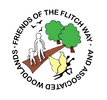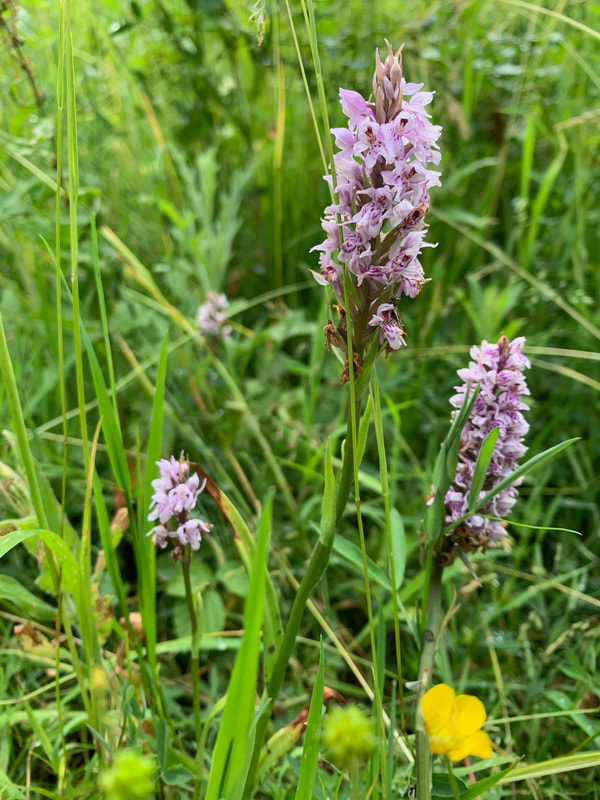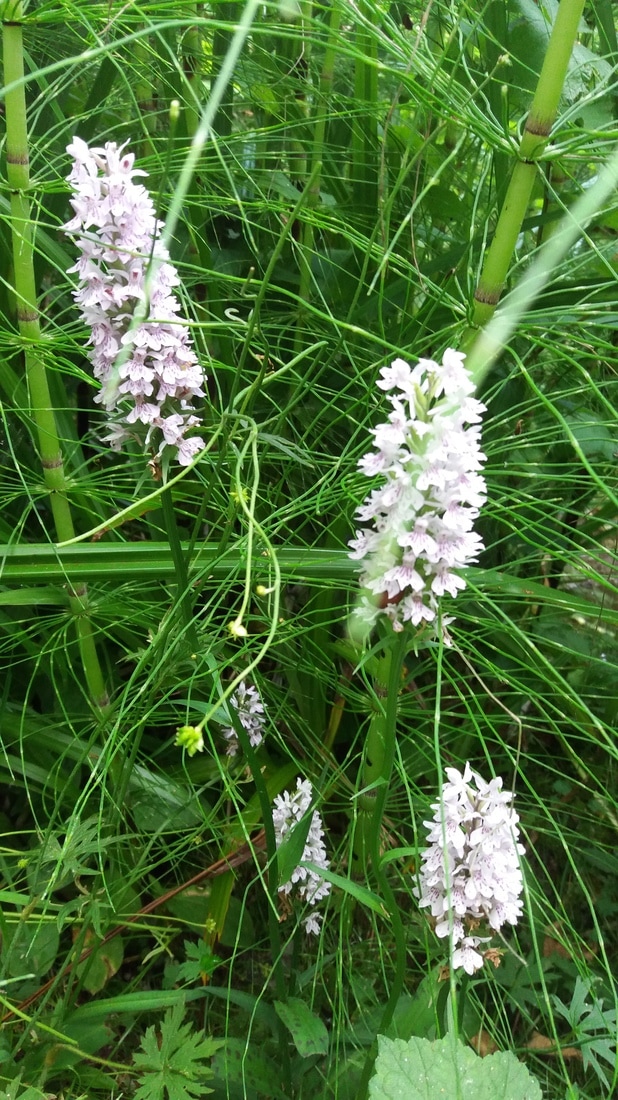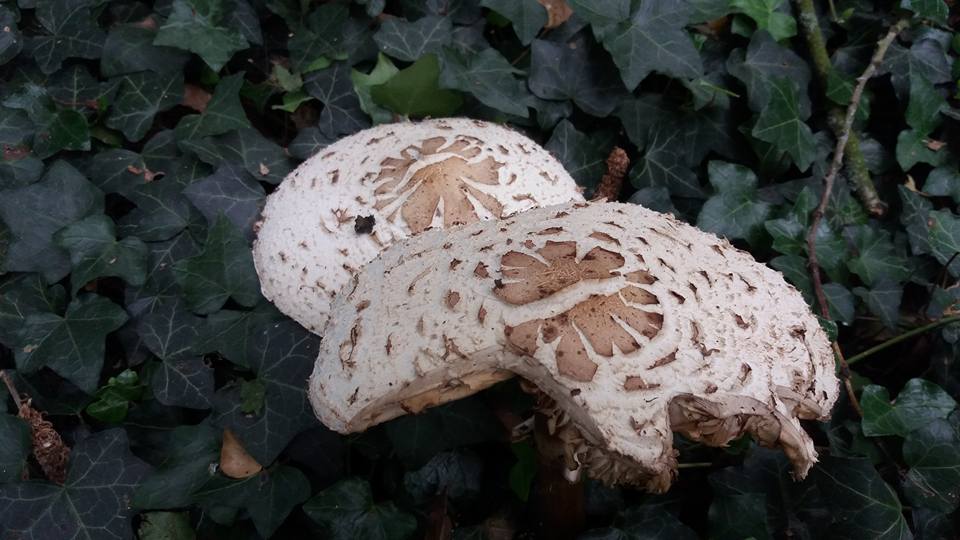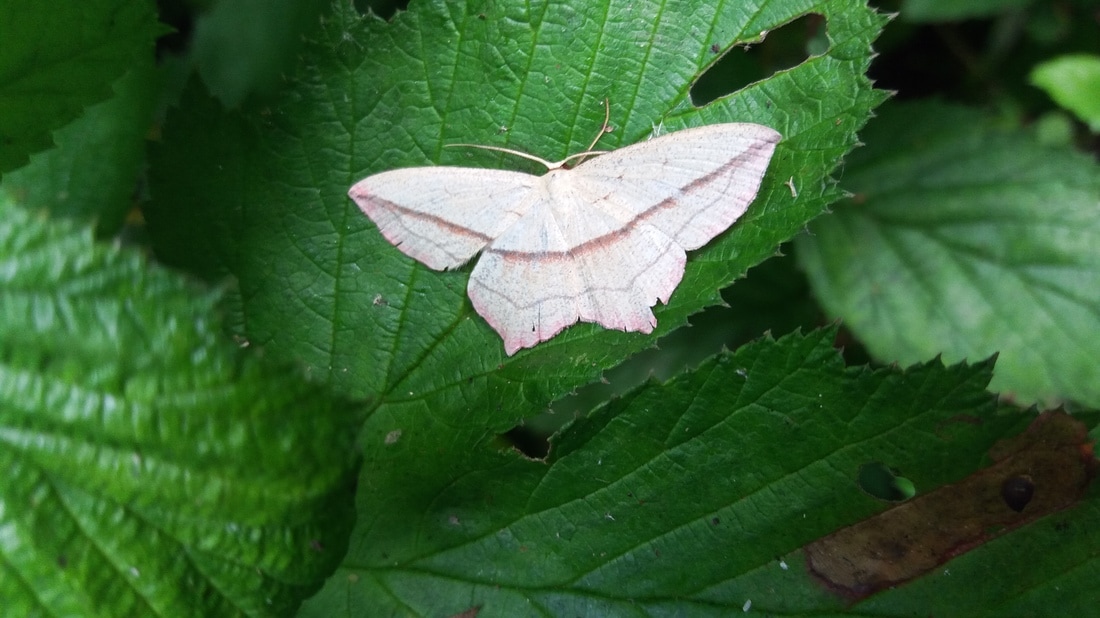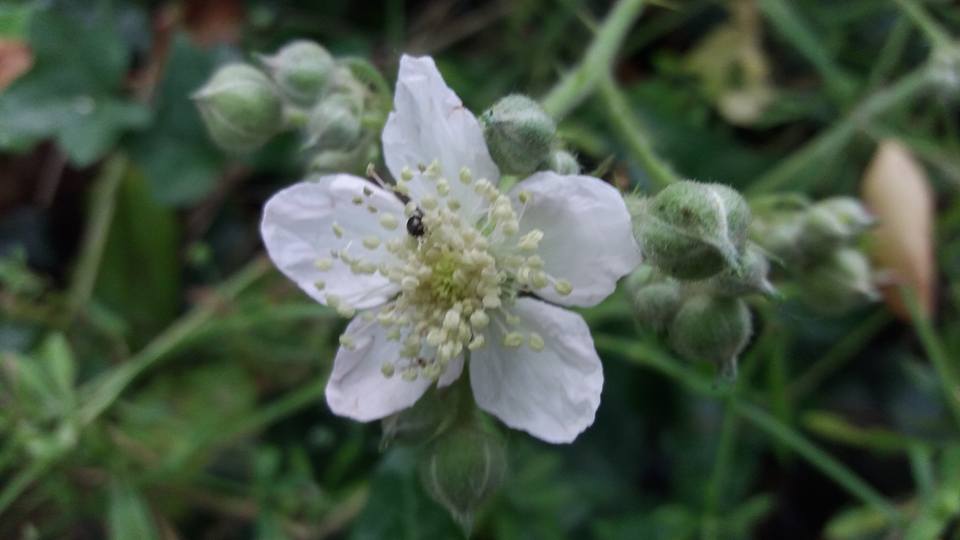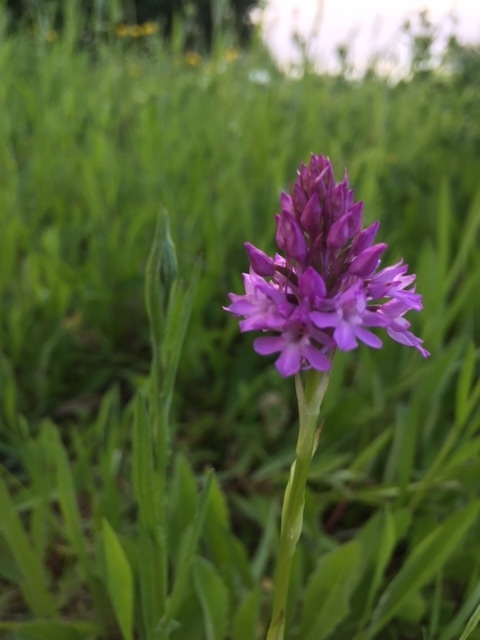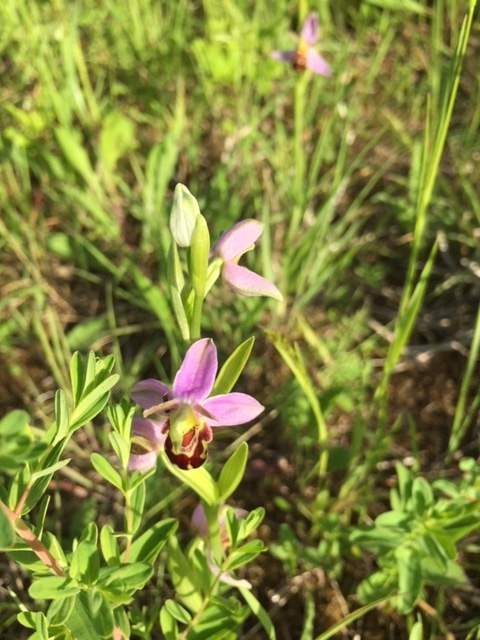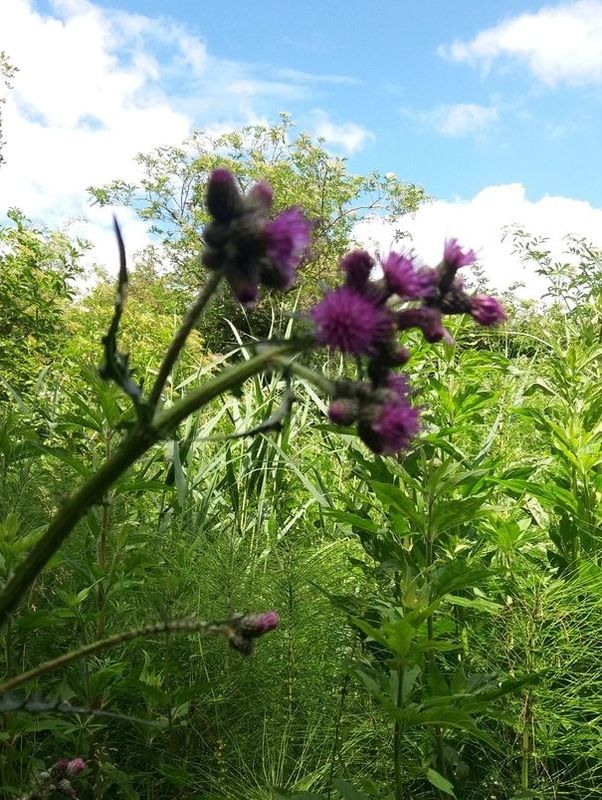Wildlife to watch in June
Mullein
|
Mullein (Verbascum thapsus) is a biennial which forms a rosette of large grey-hairy ovate leaves in its first year, then the following year produces a tall stem bearing a succession of light yellow, saucer-shaped flowers 3cm across. The top 3 stamens of the flower are covered in downy hair as are the grey-green leaves.
There are a whole long list of alternative names including Aaron’s Rod, Adam’s Flannel, Giant Mullein and Our Lady’s Candle. Mullein is used in herbal medicine as an infusion for sore throats or as a tincture for dry and chronic coughs. Historically the leaves were smoked to help asthma and tuberculosis and Roman ladies dyed their hair a golden colour with an infusion of the flowers. |
Also look out for
Common Orchid
|
As the name suggests, this is the most common UK orchid species. You can see it flowering from now until August in woodland and damp grassland especially Dunmow Cutting. The flowers bloom in clusters from a central spike, which can grow up to 60cm tall. They can be white or range from shades of pale pinks and purples to deeper shades. Both the leaves and petals are covered in purple spots. |
Foxgloves
The high flower stems are only produced in the plant's second year and can be seen between June and September. Foxgloves can be found in woodlands, gardens, on moorlands, coastal cliffs, roadside verges and waste ground. These are usually pink, but white variants are also occasionally seen. This plant is poisonous, so treat with caution.
There are a number of explanations offered for the name 'foxglove'. It is said that it was originally named 'folk's love' meaning the fairies loved the way the flowers point downwards as it gives them a place to shelter. As home to the fairies, children were told it was bad luck to disturb the plant as this would lead to the fairies being homeless.
There are a number of explanations offered for the name 'foxglove'. It is said that it was originally named 'folk's love' meaning the fairies loved the way the flowers point downwards as it gives them a place to shelter. As home to the fairies, children were told it was bad luck to disturb the plant as this would lead to the fairies being homeless.
Go to next month's wildlife
